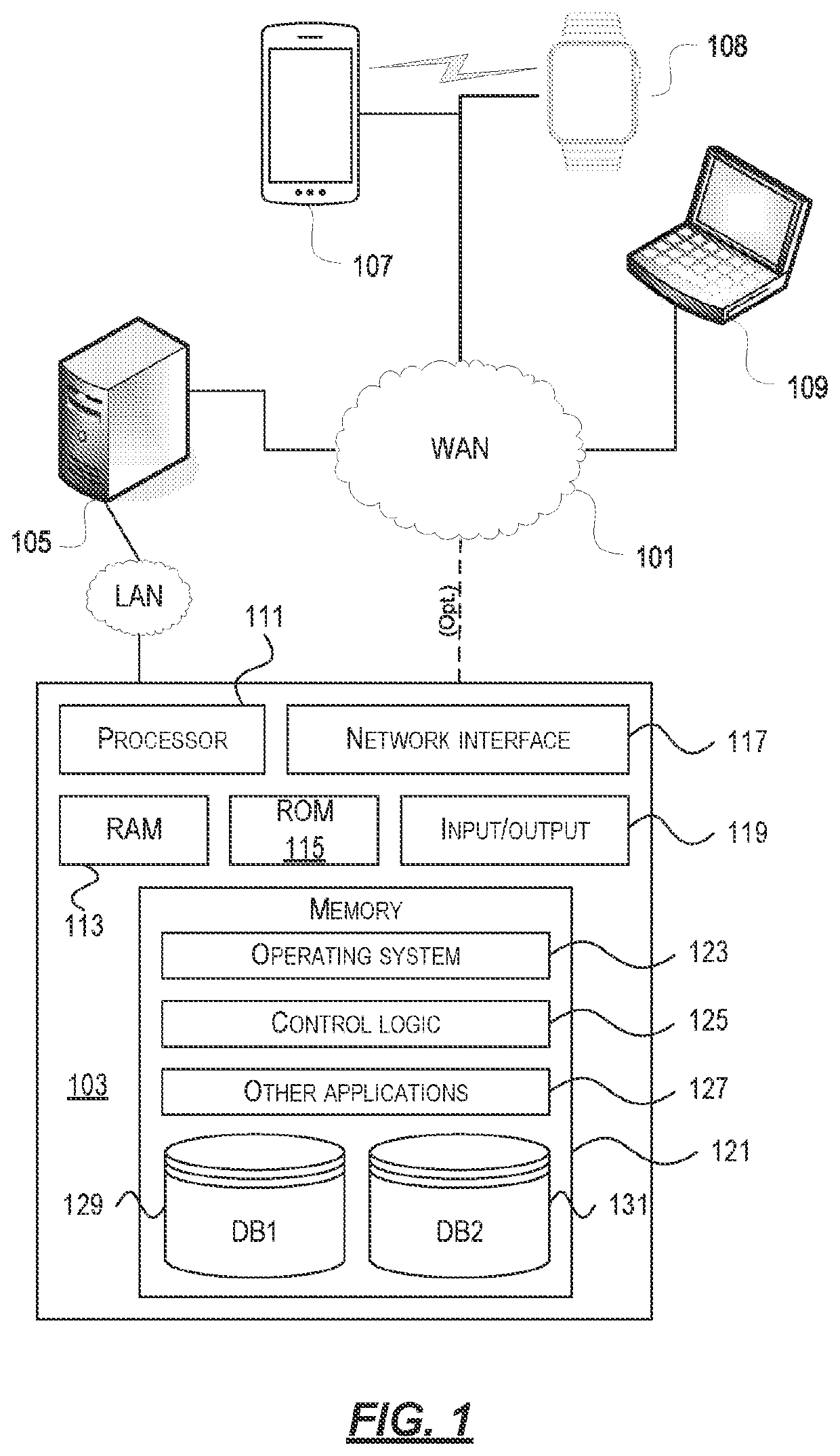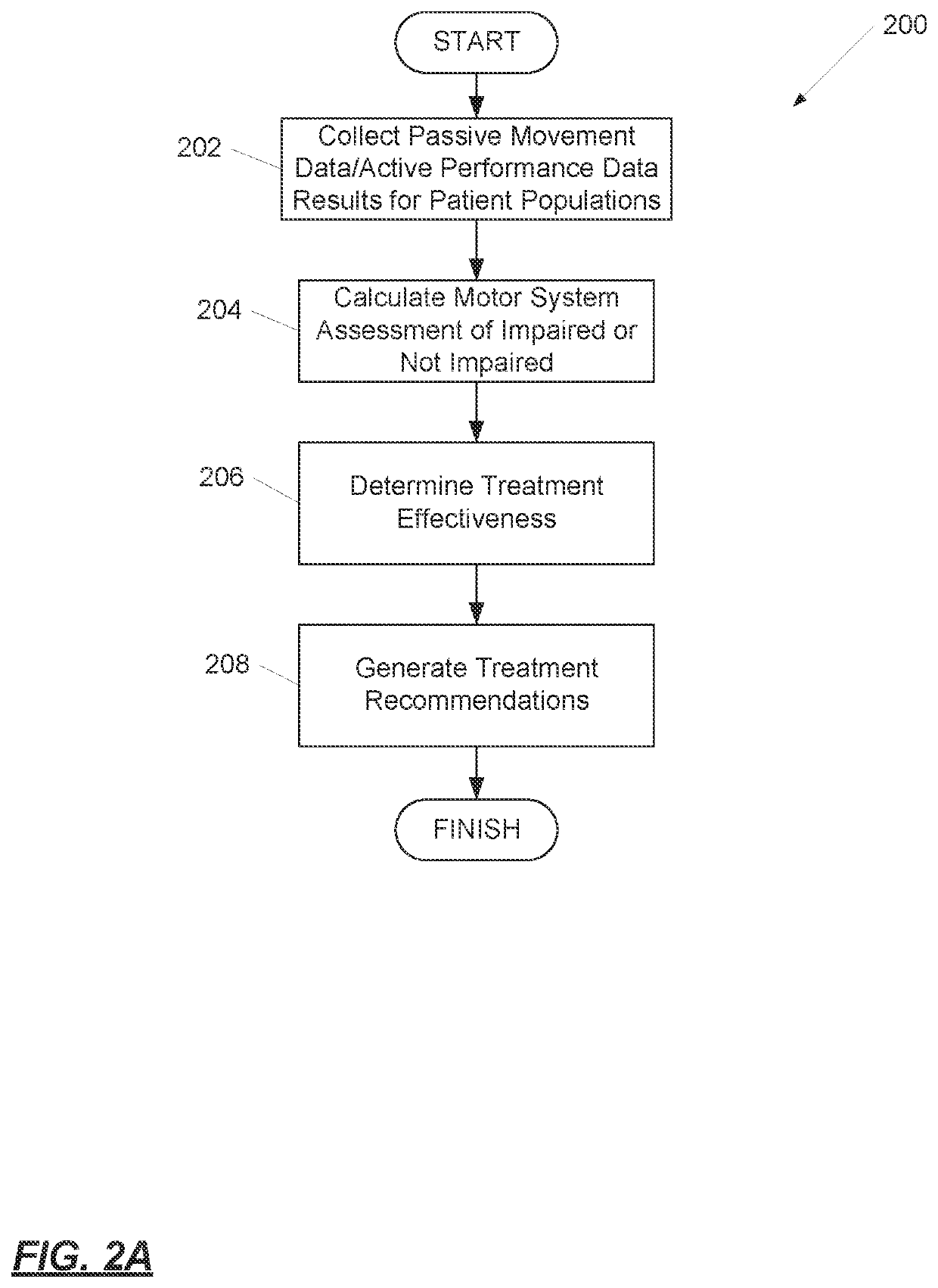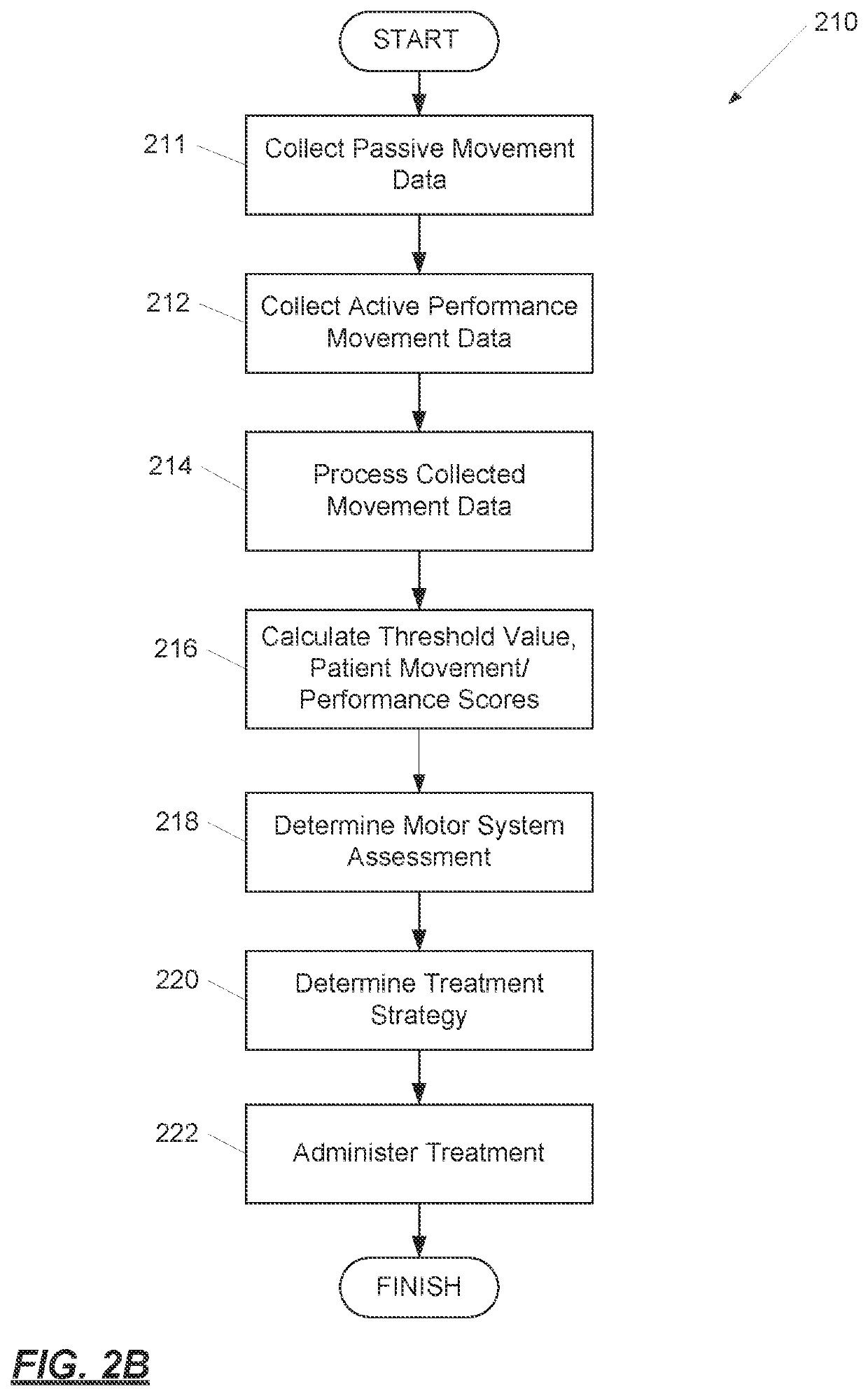Improvements in Personalized Healthcare for Patients with Movement Disorders
a technology for movement disorders and personalized healthcare, applied in the field of personalized healthcare for patients with movement disorders, can solve the problems of no definitive test for parkinson's disease, progressive disease with symptoms that slowly worsen, etc., and achieve the effect of accurate prediction of pd patient qol, health status and disease severity, and accurate treatment recommendations
- Summary
- Abstract
- Description
- Claims
- Application Information
AI Technical Summary
Benefits of technology
Problems solved by technology
Method used
Image
Examples
example 1
[0070]The EQ-5D-5L is a self-assessed, health related, QoL, questionnaire used to evaluate PD patients. The scale measures QoL on a 5-component scale including: 1) Mobility; 2) Self-Care; 3) Usual Activities; 4) Pain / Discomfort; and 5) Anxiety / Depression. Each level is rated on scale that describes the degree of problems in that area (i.e., no problem walking about, slight problem, moderate problem, severe problem, or unable to walk). The questionnaire also has an overall health scale where the PD patient selects a number between 1-100 to describe the condition of their health, 100 being the best imaginable. The EQ-5D-5L contains 3125 possible health states defined by combining one level from each scale, ranging from 11111 (full health) to 33355 (worst health).
[0071]As discussed above and according to one aspect disclosed herein, motor behavior of patients recently diagnosed with PD may be measured in daily life using sensors from a smartphone and / or wearable device such as a smart ...
example 2
[0075]Parkinson's Disease Questionnaire-39 (PDQ-39) is a self-assessed QoL questionnaire used to evaluate Parkinson's disease health related quality. The PDQ-39 is used to assess patient difficulty across eight main QoL dimensions, each with several sub-items, to include Mobility, Activities of Daily Living, Emotional Well-Being, Stigma, Social Support, Cognition, Communication, and Bodily Discomfort. The QoL dimensions may be scored on a five point ordinal system: 0=Never, 1=Occasionally, 2=Sometimes, 3=Often, 4=Always.
[0076]Each PDQ-39 dimension total score may range from 0 (never have difficulty) to 100 (always have difficulty). The dimension score may be calculated by determining the sum of the sub-items in each dimension and multiplying by 100. Lower scores may reflect a better QoL. The overall PDQ-39 score may be calculated as the sum of the dimension scores divided by eight. The PDQ-39 questionnaire is used to assist health and social care professionals to determine the wider...
example 3
[0083]The Movement Disorder Society—Unified Parkinson's Disease Rating Scale (MDS-UPDRS) is a comprehensive QoL assessment designed to monitor the severity of Parkinson's disease across the longitudinal disease course and provide clinical recommendations to healthcare providers. The MDS-UPDRS assessment includes 50 comprehensive questions to access both motor and non-motor symptoms associated with PD. The MDS-UPDRS includes four parts with a total summed score. The components of the assessment include: Part I non-motor experiences of daily living (13 items), Part II motor experiences of daily living (13 items), Part III motor examination (18 items), and Part IV motor complications (six items). Part I includes two components, Part IA that concerns a number of behaviors assessed by an investigator with pertinent patient and caregiver information, and Part IB completed solely by the patient. Each subscale has a rating of 0-4, where 0=normal, 1=slight, 2=mild, 3=moderate, and 4=severe. ...
PUM
 Login to View More
Login to View More Abstract
Description
Claims
Application Information
 Login to View More
Login to View More - R&D
- Intellectual Property
- Life Sciences
- Materials
- Tech Scout
- Unparalleled Data Quality
- Higher Quality Content
- 60% Fewer Hallucinations
Browse by: Latest US Patents, China's latest patents, Technical Efficacy Thesaurus, Application Domain, Technology Topic, Popular Technical Reports.
© 2025 PatSnap. All rights reserved.Legal|Privacy policy|Modern Slavery Act Transparency Statement|Sitemap|About US| Contact US: help@patsnap.com



